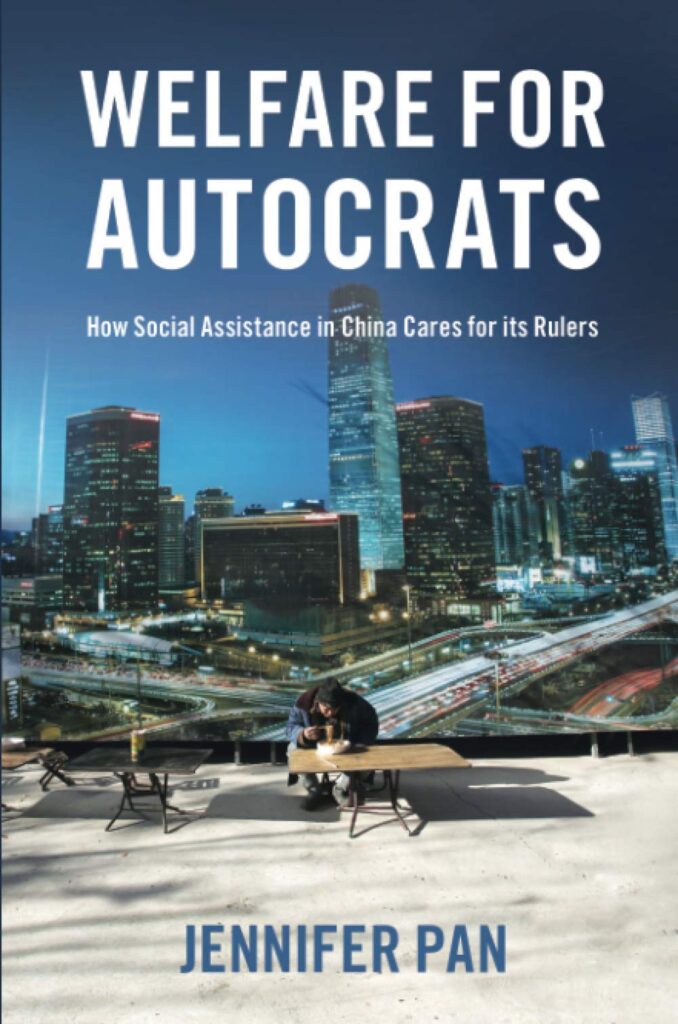
Review of Welfare for Autocrats: How Social Assistance in China Cares for its Rulers by Jennifer Pan. Oxford, 2020.
Mixing qualitative and novel quantitative methods, Stanford’s Jennifer Pan offers an illuminating case study of the logic governing China’s party-state and its people’s relationship to it. The focus of her study is Dibao, a minimum income program, which has been partially coopted in the interests of the government’s obsession with “stability maintenance.”
Contrary to perceptions of China as unforgiving to those guilty of “obstructing social order” – the euphemistic and largest annual category of prosecutions – the state is often willing to bargain with those who threaten small-scale challenges to its authority. One means of doing so is prioritizing the provision of benefits to individuals who have run afoul of the government. The intent is to both inculcate a dependence on the government that may temper future disruptions and create a pretext for surveillance in the guise of welfare calls. In one experiment, Pan finds that governments are more likely to respond to online requests for assistance that include a vague allusion to collective action than those which do not.
Pan makes clear that this should not be considered an anti-recidivist policy, writing that “to regard the provision of Dibao as [such] requires us to subscribe to the Chinese regime’s conceptualizations of crime, which encompasses expressions of personal grievance, political dissent, religious practices, collective action” and its “tactics of preemptive policing that place stringent limitations on personal autonomy.”
There is reason to believe that this dual-use of Dibao is doubly ineffective. Using survey data, Pan finds no difference between the likelihood of engaging in collective action among individuals who are in areas that use Dibao to advance security objectives and individuals who are not. Moreover, areas with a track-record of dual-use may engender backlash against their local government, as evidenced by lower measures of legitimacy and higher welfare-related collective action events.
In her conclusion, Pan draws on a metaphor from computer science to make a broader claim about China’s emergent “digital dictatorship.” Models must always tradeoff precision (only labeling someone as a threat who actually is) and recall (not missing someone who is a threat). The latter will win out in a system that prioritizes control and derives power from budgets that flow to that end. (Domestic security spending in China exceeds military spending.) “Is this realistic?” she asks. “When we look at what is happening today in Xinjiang, the answer seems to be yes.”
A more limited argument might have emphasized the economic implications. At minimum, the coopting of welfare policies for purposes of control may undermine support for their expansion. Underinvestment in social welfare could thus result in significant long-term costs. At maximum, a recall-focused digital dictatorship would cause significant deadweight losses as the economy overinvests in security and catches too many productive citizens in its dragnet. This too is harmful to the political system’s long-run viability.
Impressive in its methods and clarity of argument, Jennifer Pan has given reason for excitement about the next generation of China scholars.